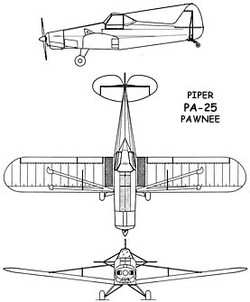Initial Probe Focuses On Pawnee's Fuel System
The NTSB has issues its preliminary report in an accident
involving a Piper Pawnee airplane belonging to a banner towing
company in Jacksonville, FL on the last day of December, 2011. The
accident resulted in the fatal injury to the pilot of the airplane
when it went down in a shopping center parking lot across the
street from Jacksonville Executive Airport at Craig Field. The
prelim indicates that the investigation may focus on the airplane's
fuel system, while a store security video depicts a pretty classic
departure stall/spin just before impact.

NTSB Identification: ERA12FA130
14 CFR Part 91: General Aviation
Accident occurred Saturday, December 31, 2011 in Jacksonville,
FL
Aircraft: PIPER PA-25-235, registration: N7408Z
Injuries: 1 Fatal.
This is preliminary information, subject to change, and may
contain errors. Any errors in this report will be corrected when
the final report has been completed.
On December 31, 2011, at 1111 eastern standard time, a Piper
PA-25-235, N7408Z, operated by Flying Weaners Inc, was
substantially damaged when it crashed in a parking lot and struck a
parked vehicle in Jacksonville, Florida. The airplane had departed
from the Craig Municipal Airport (CRG) just prior to the accident.
Day visual meteorological conditions prevailed and no flight plan
had been filed. The commercial pilot was fatally injured. The local
banner tow flight was conducted under the provision of 14 Code of
Federal Regulations Part 91.
According to several eyewitnesses and a local business security
video, the airplane had departed, attempted to pick up the banner
once and was unable to do so. On the second attempt the airplane
picked up the banner and began the initial climb. When the airplane
was approximately 300 feet above ground level the banner was
released over airport property, the airplane turned to the left at
an approximate 60 degree bank turn, and then began to spin to the
right. The airplane was observed on the security video in a right
spin, prior to impacting the ground and a parked vehicle.

The airplane impacted the ground in a nose down attitude.
Continuity was confirmed to all flight control surfaces from the
base of the control column and rudder pedals to their respective
control surfaces. The engine remained attached to the firewall;
however, the 2-bladed propeller was impact separated and was
located approximately 10 feet forward of the main wreckage. The
outboard 14 inches of one propeller tip was impact separated and
was located directly beneath the airplane's engine. The airplane's
fuel tank was breached and devoid of fuel; however, a blue fluid
similar to the color of 100 LL aviation fuel was observed at the
fuel strainer and underbelly of the airplane. The airplane was also
equipped with a 21 gallon ferry bladder tank located in the
agricultural chemical hopper directly in front of the cockpit. The
fuel tank contained approximately 4 gallons of blue fluid similar
to 100 LL aviation fuel and was not compromised. The fuel line
leading from the ferry tank to the airplane's fuel tank consisted
of clear tubing with a shutoff valve and a transfer pump. The
shutoff valve was found in the "ON" position and fuel was leaking
from the fittings between the valve and pump.
A Garmin 396 Global Positioning System receiver was located in
the airplane and retained for download at the Safety Board's
Recorders laboratory.
 NTSB Final Report: Patriot Aircraft LLC CX1900A
NTSB Final Report: Patriot Aircraft LLC CX1900A Aero-News: Quote of the Day (12.06.25)
Aero-News: Quote of the Day (12.06.25) ANN's Daily Aero-Term (12.06.25): High Speed Taxiway
ANN's Daily Aero-Term (12.06.25): High Speed Taxiway ANN's Daily Aero-Linx (12.06.25)
ANN's Daily Aero-Linx (12.06.25) Airborne-NextGen 12.02.25: Honda eVTOL, Arctus High-Alt UAS, Samson Patent
Airborne-NextGen 12.02.25: Honda eVTOL, Arctus High-Alt UAS, Samson Patent




